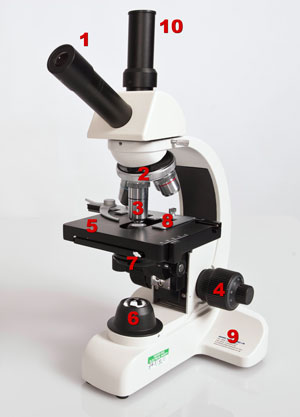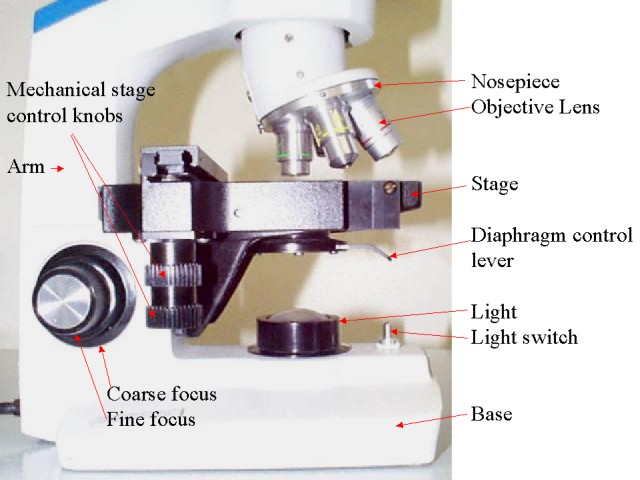Compound Light Microscope Change Magnification

It s an upright microscope that produces a two dimensional image and has a higher magnification than a stereoscopic microscope.
Compound light microscope change magnification. A compound light microscope is a type of light microscope that uses a compound lens system meaning it operates through two sets of lenses to magnify the image of a specimen. The common ocular magnifies ten times marked as 10x. Lcd digital microscope skybasic 4 3 inch 50x 1000x magnification zoom hd 1080p 2 megapixels compound 2600 mah battery usb microscope 8 adjustable led light video camera microscope with 8g tf card 4 1 out of 5 stars 265. This part holds the objective lenses and is able to rotate to change magnification.
To calculate total magnification find the magnification of both the eyepiece and the objective lenses. If the microscope has a fourth objective lens the magnification will most likely be 100x. In order to ascertain the total magnification when viewing an image with a compound light microscope take the power of the objective lens which is at 4x 10x or 40x and multiply it by the power of the eyepiece which is typically 10x. Refers to the degree of magnification for a lens.
These are found on the nosepiece and range from low to high power. Rotate the nosepiece so that the objective lens with the lowest level of magnification is directly above the sample reminder. In this type of microscope there are ocular lenses in the binocular eyepieces and objective lenses in a rotating nosepiece closer to the specimen. Parts of a.
E simple light microscope it has low magnification because it uses a single lens and the compound light microscope it has a higher magnification compared to the simple microscope because it uses at least two sets of lenses an objective lens and an eyepiece. Using lower magnifications first helps to select the part of the specimen of interest and then adjust further. More light is better than less light but. The standard objective lenses magnify 4x 10x and 40x.
Look through the binocular eyepieces and adjust the iris diaphragm until the amount of light is satisfactory.


















